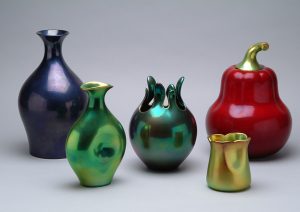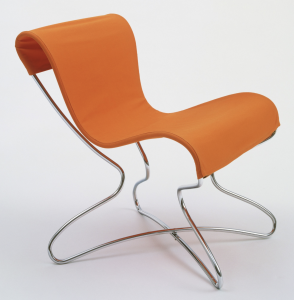
Despite her Hungarian origins, Eva Zeisel is little known in Hungary, although she is a world-famous potter. After an international career spanning nearly nine decades and hundreds of completed designs, she died in New York in 2011, shortly after her 105th birthday. Her work will be with us for a long time to come, appearing not just in art markets, web-shops, and homes, but in the world’s most important private and public collections.
Eva Zeisel was born Éva Amália Striker in Hungary on November 13, 1906, into the prominent Striker-Polányi family of Budapest. Her grandmother was Cecile Wohl Polacsek, famous for her literary salon, while her mother was Laura Polányi, the first woman to graduate in Hungary.
Eva tried and excelled in several artistic disciplines: dancing, acting, and painting. In 1923, she was admitted to the Royal Hungarian Academy of Fine Arts, where she was a student of János Vaszary’s. She later worked as a set designer and finally turned to pottery in 1925.

Hungarian Zsolnay manufactured vases designed by Eva Zeisel.
In 1925, she was officially accepted as a member of the Budapest Roofing, Stove, and Well-Making Craftsmen’s Association, and soon found work in the Gránit Factory. She was only 19 at the time. From there she went to Germany, where
she designed her first tableware, tea sets, vases, and inkwells at the Schramberger Majolikafabrik.
In 1931, Eva Zeisel married Alexander Wiessberg-Cybulski, with whom she moved to the Soviet Union, where she eventually became the designer and then artistic director of the Lomonosov factory. Here, she managed to create a set of inexpensive plates that could be used in every factory canteen, school, kindergarten, and hospital throughout the Soviet Union, which cost only pennies to produce.

These pieces are part of the Town and Country design, often referred to by Zeisel as her Shmoo salt and pepper shakers (based on Al Capp’s cartoon character).
In 1936, however, Eva was arrested, accused of collaborating with her colleagues in the preparation of an assassination plot against Stalin. She spent more than a year in prison, but later managed to flee to London, where she met her second husband, Hans Zeisel, with whom she decided to move to the United States.
It was here that Eva Zeisel’s career came to fruition,
teaching at the prestigious Pratt Institute and designing the white set called ‘Museum’ for the Castleton China Company, which was exhibited at the Museum of Modern Art in 1946.
She also designed the Town and Country set, and the Wee Modern for children, among others. She worked for the Hall China Company, created an Eva set for Rosenthal in West Germany, and briefly dabbled in furniture design.

The Resilient Chair designed by Eva Zeisel
In the 1980s, Eva traveled to Hungary where she had a life exhibition at the Museum of Applied Arts. Later she returned to Russia to the Lomonosov factory, where she created a new tea set for the Russian client. In 2004, Eva Zeisel was awarded the Central Cross of the Hungarian Order of Merit. She has also received awards in the United States and Great Britain.
Her works can be found in the collections of the world’s most important museums, including the Metropolitan Museum of Art, the Museum of Modern Art, and the British Museum, among others.
Featured photos via evazeisel.com